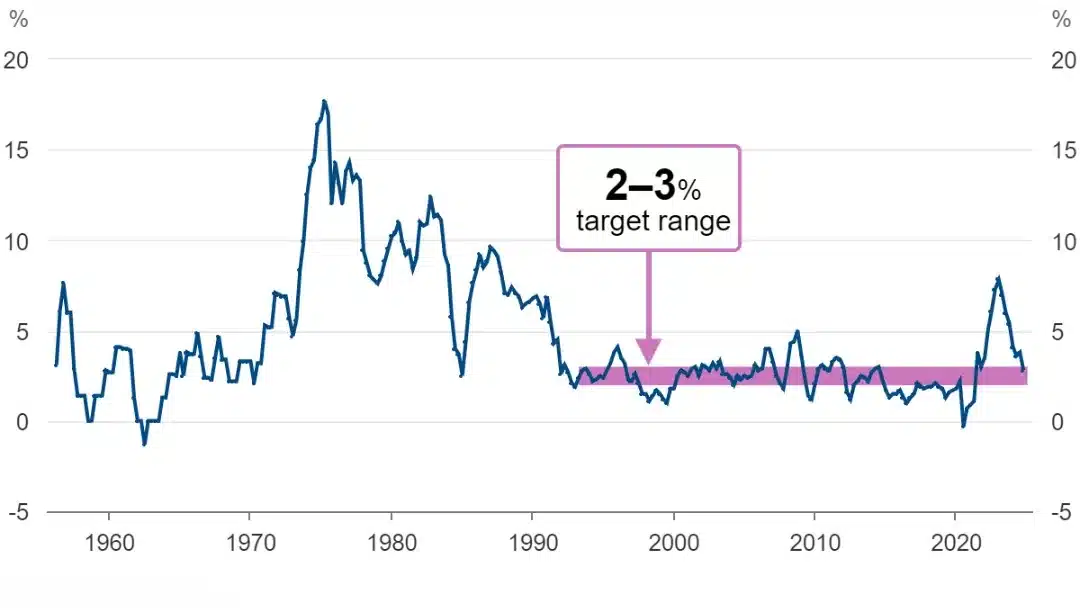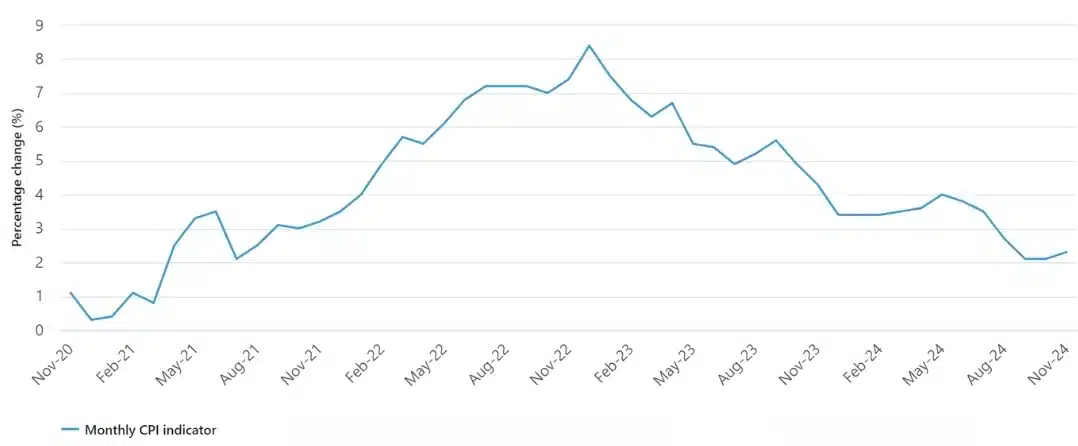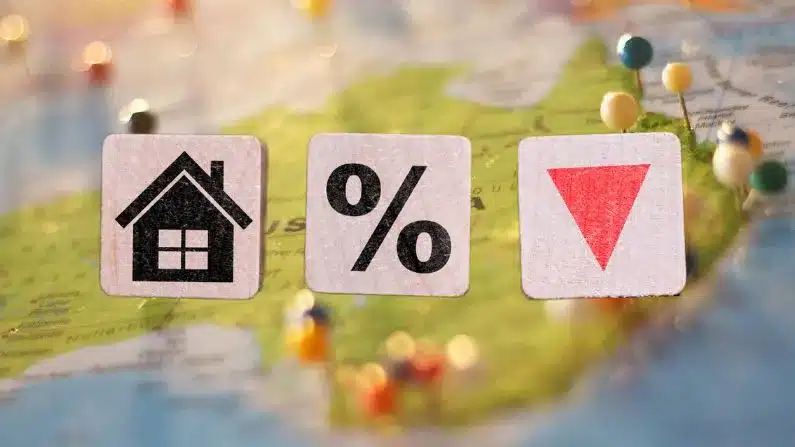A rate cut can have a significant impact on the housing market by lowering borrowing costs, increasing affordability, and boosting buyer demand. This often leads to greater competition and upward pressure on house prices. For buyers and investors, understanding how rate cuts influence the market is essential for timing decisions and maximizing opportunities in a shifting economic landscape.
Could 2025 mark the year of lower interest rates and house prices, following rate hikes to a peak of 4.35 per cent? The Australian housing market is buzzing with expectation about a potential interest rate reduction by the Reserve Bank of Australia (RBA), which could lead to increased price growth. With inflation finally within the RBA’s target range of 2-3 per cent, many economists are predicting that the first interest rate cut could happen as early as February. While this might sound like great news for home buyers and investors, waiting for rate changes might not be the best strategy. Here’s why.

Source: RBA
Inflation and the Current Economic Landscape
In recent years, inflation has been a major topic, particularly since the global pandemic. However, 2024 marked a shift, as inflation fell to 2.7 per cent in August, and later settled at 2.1 per cent in September and October and sitting at 2.3 per cent in November 2024. This steady trajectory within inflation target range has given the Reserve Bank of Australia more room to consider reducing the cash rate, which has remained high after 13 consecutive increases since May 2022. While lower interest rates may sound appealing to many homebuyers and investors, waiting for a rate cut might mean missing out on better property prices. The financial market and the Big Four (CBA, ANZ, NAB and Westpac) are already anticipating the cash rate reduction, and this could spark a surge in demand for properties listed on realestate.com.au.
Inflation Target

Source: ABS & RBA
How Rate Cuts Impact the House Prices
When the RBA cut the cash rate, it often leads to a reduction in mortgage rates, making it easier to buy a house. Lower mortgage rates make borrowing more affordable, which can significantly boost demand for properties. This increased demand often drives up prices, particularly in a competitive market.
Historically, lower rate tend to cause a lot of movement in the residential market. Buyers rush to take advantage of the more affordable mortgage rates, leading to higher competition for homes. Economists warn that the first monetary easing typically has the strongest impact on the demand for housing, potentially spurring price growth. This initial cut signals to the market that borrowing costs are about to decrease, which sends more buyers into action. As demand increases, real estate prices usually follow suit.
For first-home buyers or those waiting for the “perfect moment,” this could lead to facing higher property prices in a competitive market. If you wait for a interest rate cut, you may find yourself competing with more buyers, which could push home prices higher. As more people enter the market, reasonable prices may become even more challenging.
Monthly CPI indicator, Australia, annual movement (%)

Source: ABS
Why Waiting Could Backfire
Although a potential rate decrease in February sounds promising, holding off on purchasing a home or investment property could be a risky decision. Once the RBA lowers the cash rate, demand for properties is likely to surge. This increase in demand can push up residential prices, which means that waiting to buy a house might cost you more in the long run.
For first-home buyers, affordability is already a concern. Median house prices in Brisbane, Perth and Adelaide have been steadily climbing, and waiting for a rate cut could mean paying even more for a property in the future. Borrowing now, while competition is still relatively low, could allow you to secure a property before prices rise further.
The Impact on Mortgage Rates and Repayments
A cash rate reduction will make home loans more accessible, which is good news for borrowers. However, it’s important to keep in mind that while lower rates reduce monthly repayments, the increase in house prices could offset these savings. For many homeowners, a interest rate cut could also mean an increase in home equity as property values rise. However, those who delay buying may miss out on the benefits of this increase in home value.
Mortgage brokers are already advising clients to act sooner rather than wait for a decrease in borrowing costs. Waiting for a lower interest rate could mean competing with a larger pool of buyers, which would ultimately drive up the cost of homes and increase your borrowing requirements. For homeowners looking to enter the market, securing a mortgage now could be a smarter move.
The Outlook for a Decline from High Interest Rates
The real estate market is expected to experience increasing demand due to lower interest rates and changes in the RBA’s monetary policy. Economists forecast that more interest rate cuts may follow the initial one, further stimulating the market. However, just because interest rates are forecast to drop doesn’t mean waiting is a wise strategy.
Historically, higher interest rates have helped keep property prices in check. But when the central bank shifts to lower rates, demand tends to pick up rapidly, pushing prices higher. By the time the cash rate is reduced, the home market values could already be climbing, leaving buyers scrambling to secure a good deal. The initial surge in demand could even push home prices out of reach for some buyers.
What Should Buyers and Investors Do?
For homebuyers, especially first-home buyers, the best strategy is to focus on affordability and act before the market becomes even more competitive. Rather than waiting for lower mortgage rates, it’s important to consider the possibility that housing cost may increase, making the market even less affordable. The potential rise in property prices and the long-term benefits of entering the market early should outweigh the short-term advantage of a rate cut.
For property investors, now could be the time to act. With Brisbane’s property market showing resilience and steady growth, purchasing a property before the rate relief could yield higher returns as demand rises. Whether you are a homebuyer or an investor, now may be the best time to secure a property at a reasonable price before the market heats up.
Conclusion
The Reserve Bank of Australia’s potential 2025 cuts may change the dynamics of interest rates and house prices. While the idea of lower mortgage rates is enticing, waiting for a interest rate reduction could lead to missed opportunities. As real estate prices rise with increased demand, the affordability of buying a home could decrease, especially for first-home buyers. Whether you’re a homebuyer or investor, acting sooner rather than later may help you secure a property at a better price before the market becomes even more competitive.
Remember that the perfect moment to buy isn’t necessarily when the interest rates drop, but when you’re financially ready. Speak with a mortgage broker or financial advisor to assess your borrowing capacity and start planning your next move in the property market. The RBA will make its move this year, but acting early can help you take advantage of current opportunities rather than waiting for a interest rate cuts. Buyers Scout can connect you with the right mortgage broker or financial advisor to suit your needs.
Frequently Asked Questions
Is there a correlation between interest rates and house prices?
Yes, there is a correlation. When interest rates go down, borrowing becomes cheaper, which can increase demand for homes and drive house value up. Conversely, higher interest rates make mortgages more expensive, reducing demand and often leading to lower housing price levels.
What is the difference between Inflation and Consumer Price Index?
Inflation: This is the rate at which the general level of prices for goods and services rises, leading to a decrease in the purchasing power of money over time. It tells us how much more expensive things have become over a certain period.
Consumer Price Index (CPI): This is a measure that examines the weighted average of prices of a basket of consumer goods and services, like food, transportation, and healthcare. It’s used to track changes in the cost of living over time.
In essence, CPI is a tool used to calculate inflation. When the CPI goes up, it indicates that inflation is happening.
How do interest rates affect mortgages?
Interest rates directly affect mortgages interest rates by determining how much you pay in interest. When interest rates are high, monthly repayments increase, making borrowing more expensive. Lower rates reduce repayments, making mortgages more affordable for borrowers.
Are Australian house prices falling?
Australian real estate prices are not consistently falling. In some areas prices have softened due to higher interest rates and house prices. But in others, like Brisbane and South East Queensland, is the demand keeping prices steady or even increasing. It depends on the location and market conditions.
Share This Blog On:









